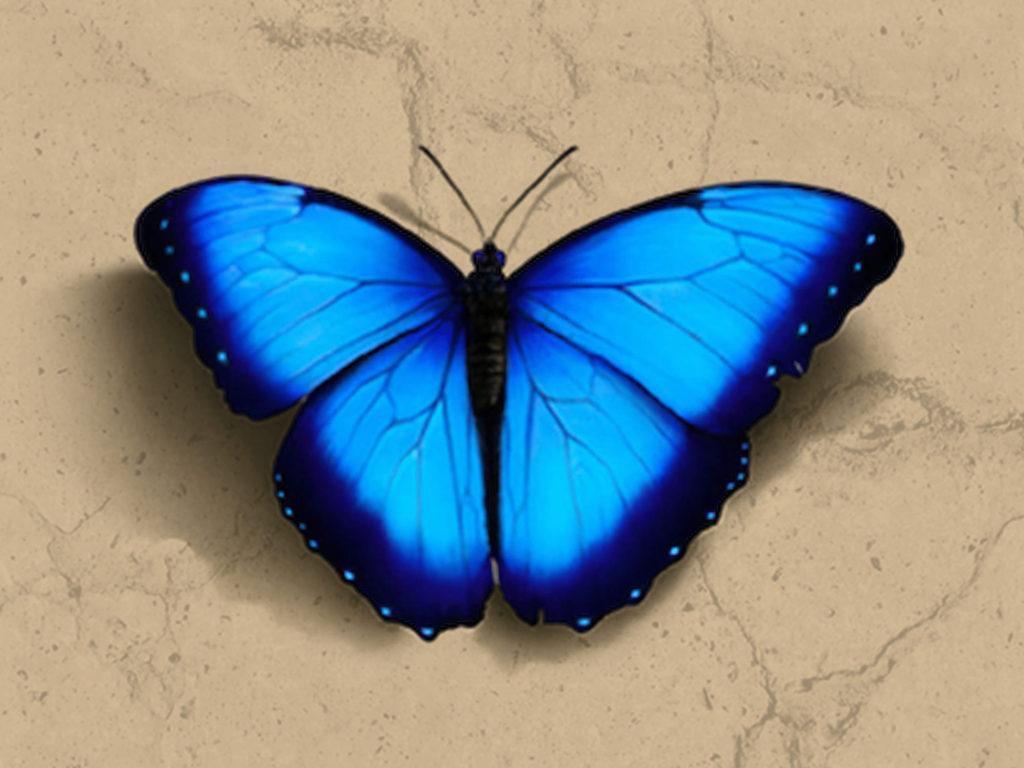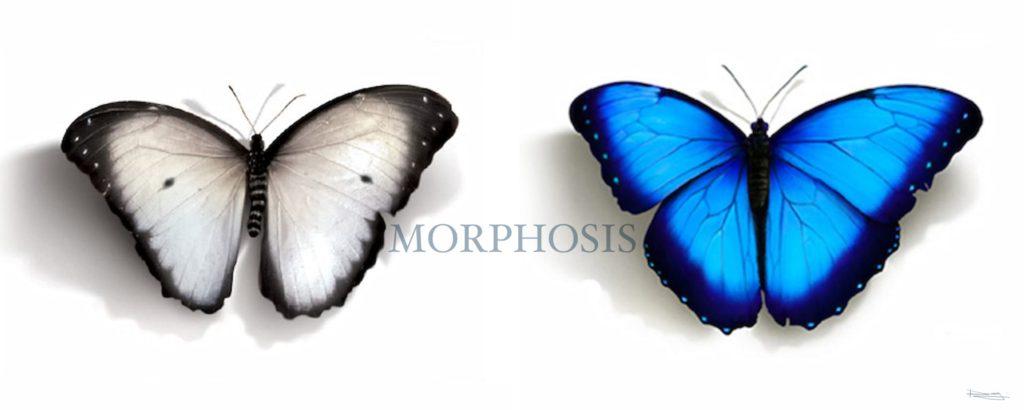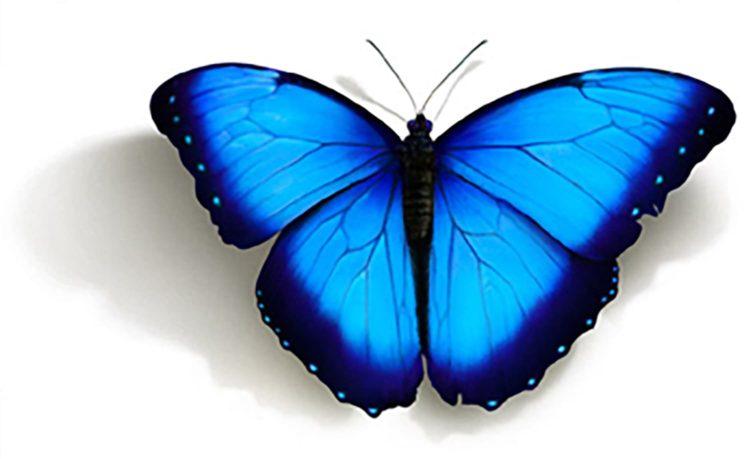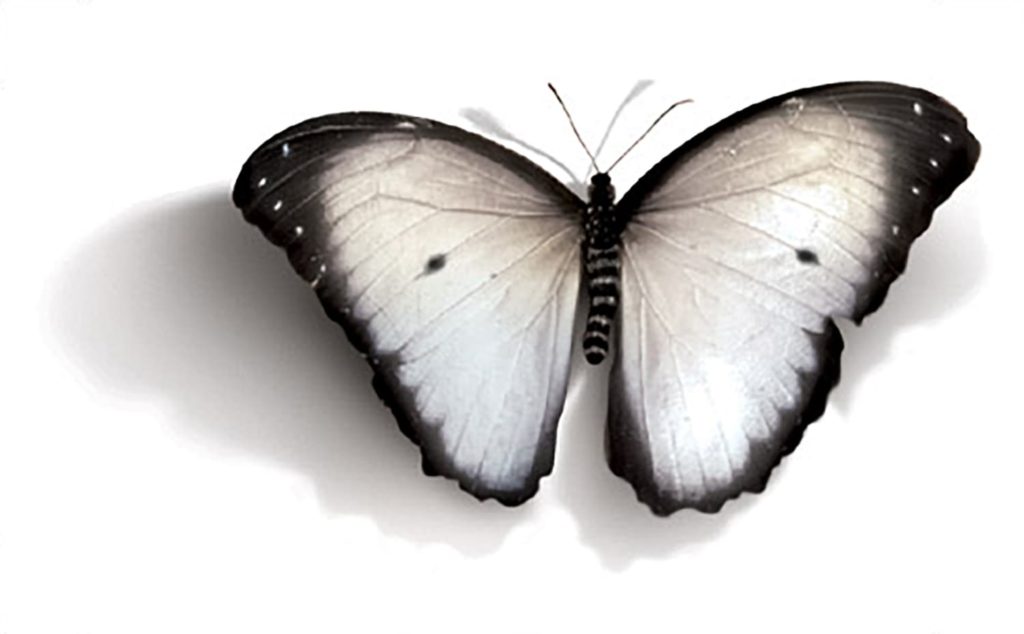Morpho and White Butterfliies
The Blue Morpho Butterfly (Morpho peleides)

Digital Paintings, Corel Painter, 1995 (Click on image, then magnifying glass icon to see at full size)
As its common name implies, the blue morpho butterfly’s wings are bright blue, edged with black. The blue morpho is among the largest butterflies in the world, with wings spanning from five to eight inches. Their vivid, iridescent blue coloring is a result of the microscopic scales on the backs of their wings, which reflect light. The underside of the morpho’s wings, on the other hand, is a dull brown color with many eye-spots, providing camouflage against predators such as birds and insects when its wings are closed. When the blue morpho flies, the contrasting bright blue and dull brown colors flash, making it look like the morpho is appearing and disappearing. The males’ wings are broader than those of the females and appear to be brighter in color.
Blue Morphos in Costa Rica
There are butterflies everywhere in Costa Rica. Around 18% of the world’s species can be found in Costa Rica, as well as 90% of the species that are found in Central America.
I encountered blue morphos, gracefully wafting in the still, misty air while on a trek through the glorious Monteverde Cloud Forest in Costa Rica in 1995.
The blue morpho butterfly is undoubtably the most famous butterfly in Costa Rica. This exquisite butterfly is one of the largest in the world, with a wingspan of 20 cm (8″). The eye-catching blue color of the wings is actually an optical illusion, as their wings aren’t actually pigmented that color. Only the males appear iridescent blue; the females are quite dull in comparison.
The White Butterfly (Pieris rapae)

Digital Paintings, Corel Painter, 1995
(Click on image, then magnifying glass icon to see at full size)
The white butterfly is native to European and Asian countries. It has spread throughout much of the world aided by worldwide transportation and the common use of their food crops.
Its introduction to New Zealand is thought to have occurred in 1929. Most likely, it was transported in imported cool-store vegetables. White butterfly pupae are able to enter diapause – a period during which their growth is suspended in response to adverse environmental conditions. Pupae in diapause could have survived for many months on vegetables transported in refrigerated ships.
White Butterflies in New Zealand
White butterflies, whose caterpillars are notorious for their voracious feeding on cabbages in New Zealand is a pest, hated by garners across the country.
I, of course, as a nature-lover was drawn to the modest but elegant simplicity of their wings, with their delicate grey veins and prominent black spot on each upper wing.
“Within 2 years after the first recorded sighting of a white butterfly in Napier, it had spread up to 200km, moving to wherever brassica crops were planted. White butterflies crossed mountain ranges and dense forests on the wing and were helped to the South Island via vegetable shipments. By 1935, the white butterfly was well established throughout the country. The lack of natural enemies allowed the species’ numbers to explode. Parasitic wasps were introduced to eat the larvae and, along with predation by birds, ladybird beetles and the occasional spider, these now keep the numbers under control.”
– sciencelearn.org.nz/


